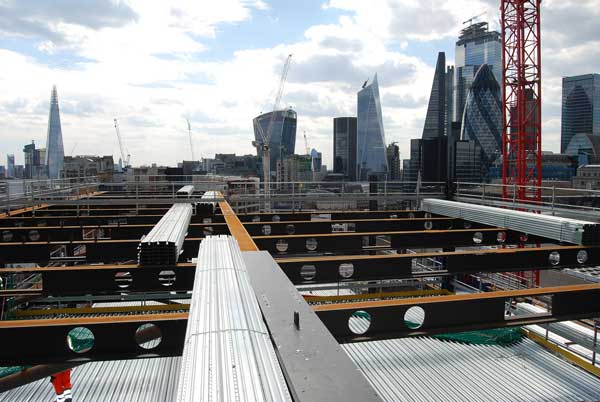Technical
AD 473: Holes in beams for temporary lifting attachments
The SCI has been asked to consider the requirement of clause 6.2.5(6) in BS EN 1993-1-1, which covers the allowance for fastener holes when calculating cross sectional resistance in bending. The clause states that ordinary fastener holes need not be allowed for, provided they are filled by fasteners.
This requirement can lead to problems when – for example – bolts must be placed in holes used for temporary lifting brackets, which then prevents other components such as precast units or decking sitting correctly on the top flange.
BS 5950 presents a less restrictive rule for members in bending in clause 4.2.5.5. According to BS 5950, no allowance need be made for bolt holes in a compression flange in bending.
SCI recommend that, within limits, bolt holes in the compression flange of beams used for temporary attachments need not be allowed for and need not be filled with bolts. In an element with holes subject to compression, if the flange yields locally, the strength of the material increases as the cross section deforms, due to strain hardening.
Some limitation on the reduction in cross section is appropriate, to prevent multiple holes in a cross section being neglected on the basis of the above recommendation.
SCI consider there is no requirement to apply the material factor γM2 = 1.1 (from the UK NA, used in the net area tension checks) when calculating the compression resistance. SCI recommend that the resistance of the net section of the flange in compression may be based on the ultimate strength.
At full utilisation, the assumed design resistance of the flange is fyAg
The resistance of the net area in compression may be taken as fuAnet
No allowance for bolt holes need be made when

If the member is not fully utilised, the design resistance of the flange may be based on a reduced stress when completing the above verification.
In the final condition, for example in a composite beam, holes in the top flange for temporary lifting attachments have little impact.
It should be noted that this advice contradicts the specific requirements of the Eurocode, so should be agreed with the designer with overall responsibility for the structure. In due course it is hoped that this advice will be presented in the NSSS.
Contact: David Brown
Tel: 01344 636555
Email: advisory@steel-sci.com











